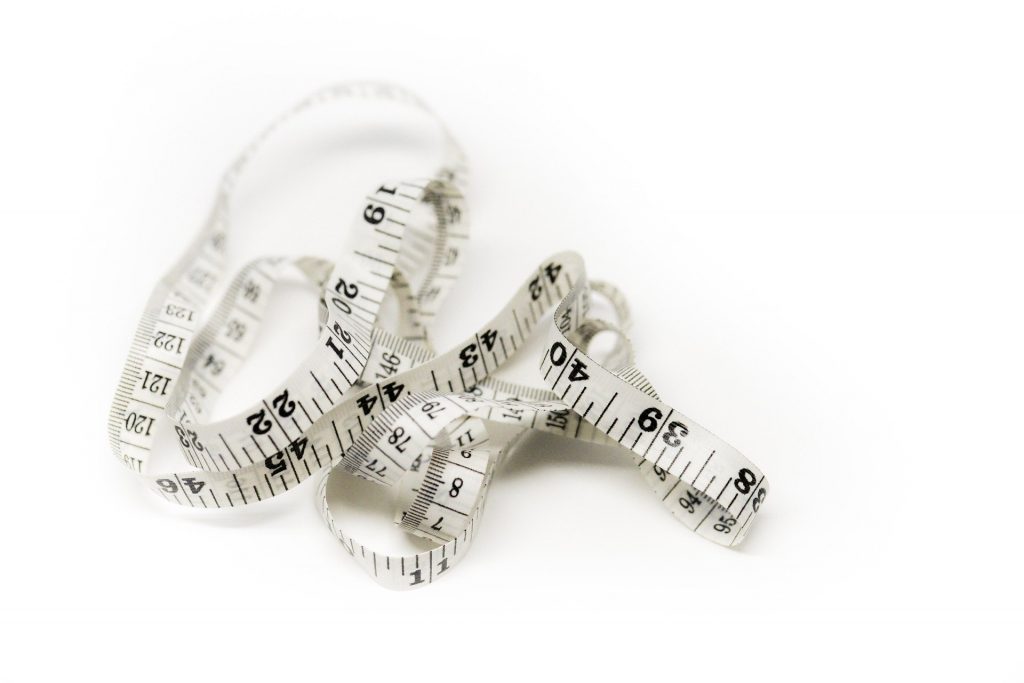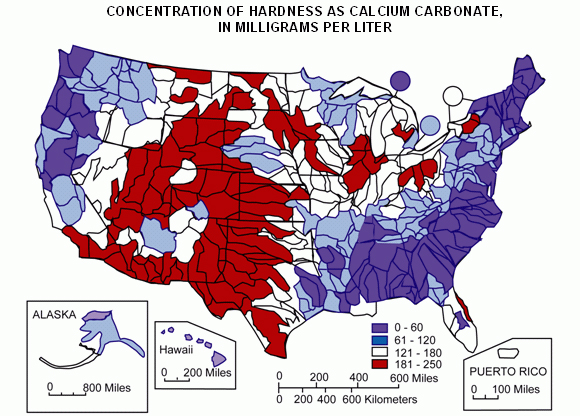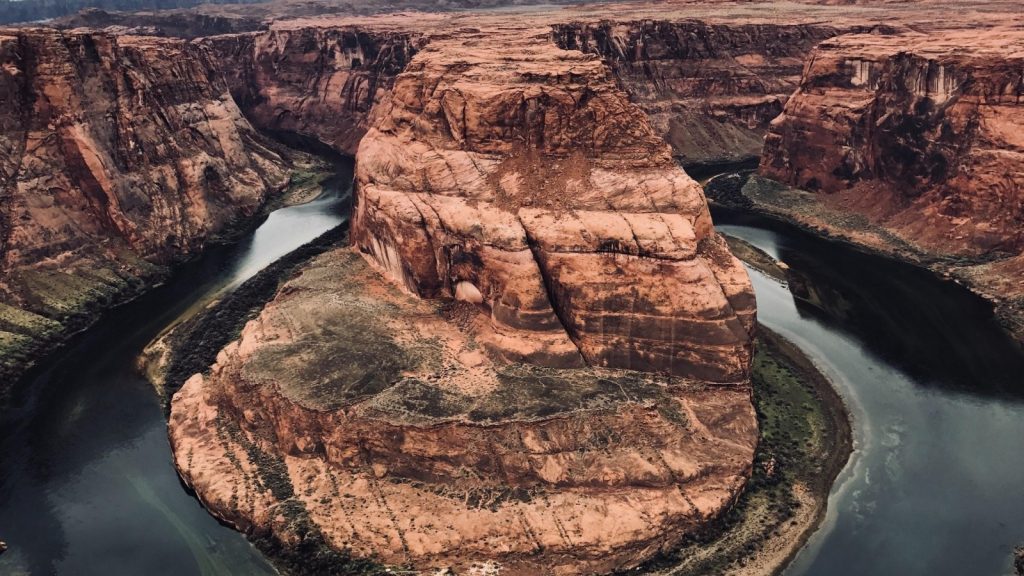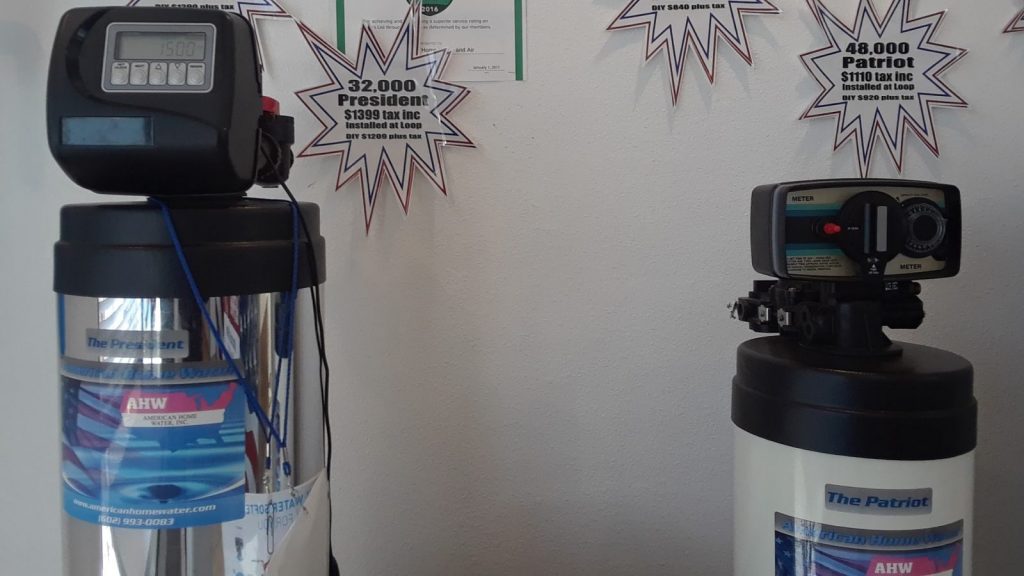Throughout roughly 85% of the United States, water softeners are an essential household appliance. Knowing how to size a water softener can mean the difference between ending up with a unit that meets your needs and one that falls short.
At American Home Water and Air, we have more than 30 years of experience installing water softeners in Phoenix. As such, we’ve put together this guide to help you make the best decision for your home.
How To Size A Water Softener: Why Should You Care, Anyway?

Many consumers are tempted to forgo proper consideration of their water softener tank size. They simply search for the lowest-priced unit, which is usually on the smaller size. This isn’t a wise decision, though.
Before we explore why that is, here’s a brief warning. Some of the information in this guide gets a bit technical. If you’re just looking for a rough estimate to help you predict how much your softener will cost, jump to the “What Size Water Softener for a Family of 4?” section.
Undersized Water Softener Problems
A water softener that’s too small won’t produce enough soft water for your household. As such, beyond a certain level of usage (or if you open up too many faucets at once) the unit will be bypassed and hard water will make its way through your plumbing. This, of course, negates all of the wonderful water softener benefits you were counting on.
Additionally, a water softener that is too small will require more frequent regeneration (read here to learn more about ideal regeneration cycles). Regeneration occurs when your water softener flushes its resin beads to get rid of built-up minerals.
In many modern systems, this regeneration process occurs based on demand; the more minerals that build up in the beads, the more frequently it will regenerate. Excessively-frequent regeneration affects the life of these resin beads and your water softener as a whole.
As you know, these systems aren’t exactly cheap, so you want to avoid this.
Oversized Water Softener Problems
An oversized water softener isn’t necessarily as bad as an undersized one, save for the fact that you will pay more money for it upfront. Regeneration will occur less frequently and the unit will use salt more efficiently. When regeneration does happen, it will, of course, utilize more water and salt but this may be negated by the fact that the cycles occur less frequently.
Even if you do buy an oversized water softener, you need to be aware of what the manufacturer-provided capacity figures actually mean. Otherwise, you won’t be able to properly estimate how much you need to spend on salt.
What Size Water Softener Should I Get? – Things To Consider
Let’s answer this question by exploring it from a couple of different angles: your available options and what factors you need to consider before making a decision.
Available Water Softener Tank Sizes & Capacities
At American Home Water and Air, we sell water softeners in the following capacities:
- 32,000 GR
- 48,000 GR
- 56,000 GR
- 64,000 GR
Check out our water softener pricing page for more information on the costs of these units.
The “GR” in those figures stands for “grains.” This is one of the common metrics water softener manufacturers use to communicate buyers of the system’s capacity.
A key part of learning how to properly size a water softener is knowing what these measurements actually translate to in the real world.
One “grain” equates to 1/7000th of a pound-worth of minerals that the softener is capable of removing from your water. To achieve the full capacity indicated by a softener’s GR figure, you need to use a specific amount of salt per regeneration cycle, which is usually outlined in the owner’s manual.
You can operate the system using lesser amounts of salt but you won’t achieve the capacity denoted by the unit’s GR figure if you do so. This may be completely fine depending on your needs. The key is to strike a balance between saving money (using less salt) and getting adequate amounts of soft water for your home.
As for the size of the tank, units possessing the capacity range mentioned above (32,000 GR – 64,000 GR) typically range in size from 9” in diameter and 48” in height to 12” in diameter and 52” in height.
If you have an existing softener that you’re looking to replace, the unit’s measurements are usually on a sticker fixed to the side.
Your Area’s Water Hardness

USGS
As mentioned earlier, 85% of the water in the United States is hard. Exactly how hard the water is can differ from region to region, though, as you can see from the map above. You need to test your water hardness in order to accurately determine how to size a water softener for your home.
Water hardness falls into the following categories:
- Soft: 10-50 ppm
- Slightly Hard: 50-100 ppm
- Hard: 100-200 ppm
- Very Hard: 200 ppm and above
The “ppm” represents “parts per million,” which denotes how heavy the water’s calcium content is.
Another metric for measuring water hardness is grains per gallon. This bears the following categories:
- Soft: 0-3 gpg
- Slightly Hard: 3-7 gpg
- Hard: 7-11 gpg
- Very Hard: 11 gpg and above
If you have extremely hard water (i.e. you live in one of the ‘red’ areas on the map above), a higher-capacity water softener will likely be in order. If you live in these ‘red’ areas, you might be wondering “is it safe to drink soft water?”, generally the answer is yes, but there are some caveats worth mentioning. This also emphasizes the importance of getting the right water softener size for your home.
Your Water Usage
Another key component of how to determine what size water softener you need is, of course, your water usage. In fact, one very quick method for determining the size focuses on this metric.
It involves calculating your daily water use and then multiplying that number by your water hardness measurement in grains per gallon. This will help you determine how many grains of minerals your softener needs to remove per day.
You can then take that figure and compare it to the capacity figures we mentioned above. As a general rule of thumb, water softeners need to regenerate at least once weekly.
What Size Water Softener For A Family Of Four?
Is your head spinning? We get it. Knowing how to determine what size water softener you need involves understanding some fairly complicated metrics that can be hard for people outside of the industry to conceptualize.
In this section, we’ll take a more basic approach. If you have the typical American family of four, a 32,000 GR softener will be adequate, provided your water hardness isn’t extreme.
If it is extreme, get in touch with your local water softener company (that’s American Home Water and Air if you live in Phoenix). A professional will be able to properly advise you as to whether you need a 48,000 GR unit or one with an even greater capacity.
What Size Water Softener Should I Get? – Conclusion
In this post, we explored (in great detail) the question of “how do you size a water softener?” How to determine the size of water softener needed depends on several factors, including:
- your water hardness
- your water consumption
- how both of those measurements correspond to the available water softener tank sizes and capacities
If you’re still wondering “how do I size my water softener?” and scratching your head, we encourage you to give your local water softener installer (American Home Water and Air in Phoenix, Arizona) a call. We also do air duct cleaning and air conditioning services, find out the cost of air duct cleaning in Glendale here. Professionals deal with the metrics mentioned in this piece every day and can accurately pinpoint the right softener size for you with ease!
Nonetheless, we hope this article has helped you become a more informed shopper. If like this article, check out this next article on “Air Duct Cleaning: Pros and Cons“.
[related_posts_by_tax posts_per_page="3" format="thumbnails" image_size="medium"]









